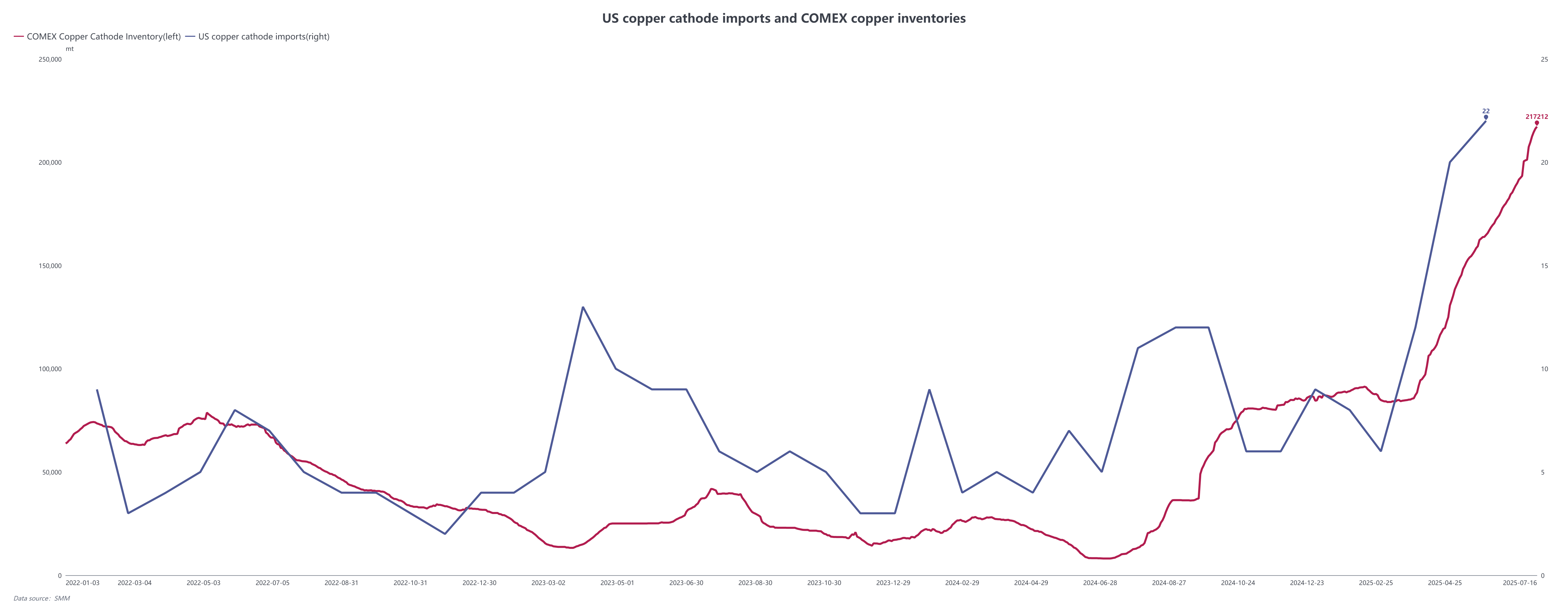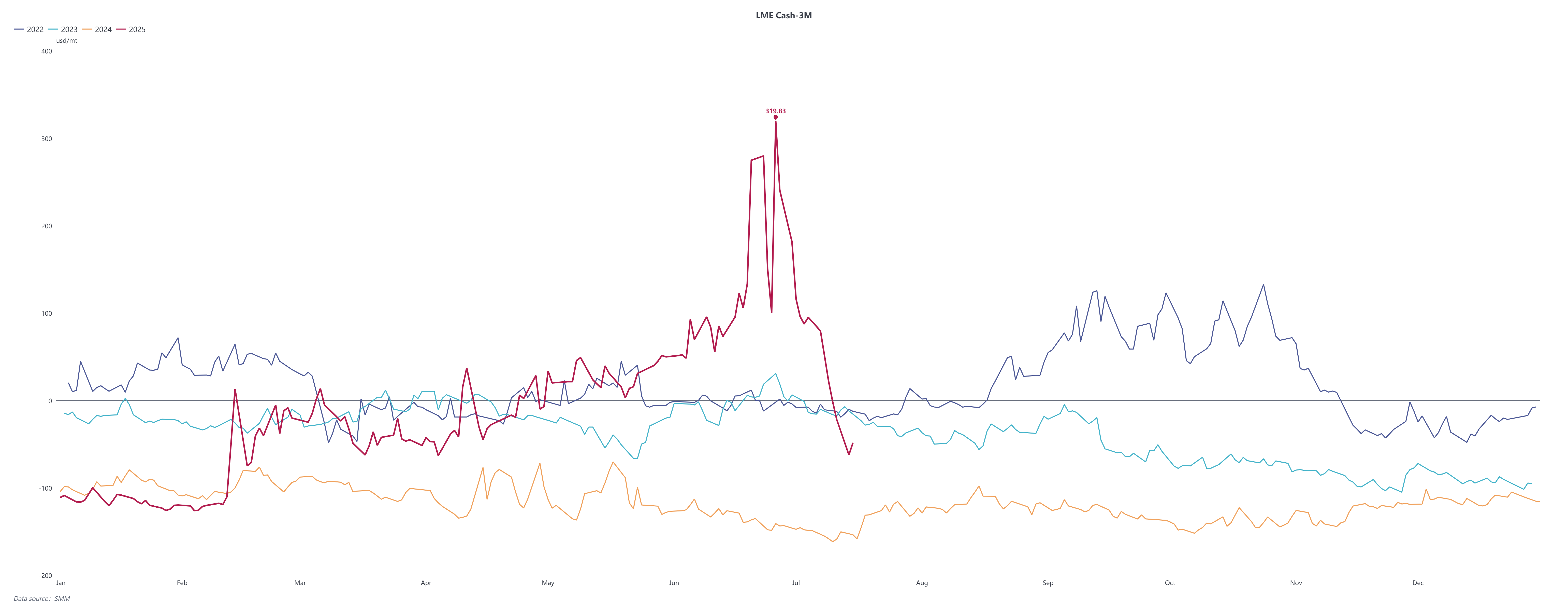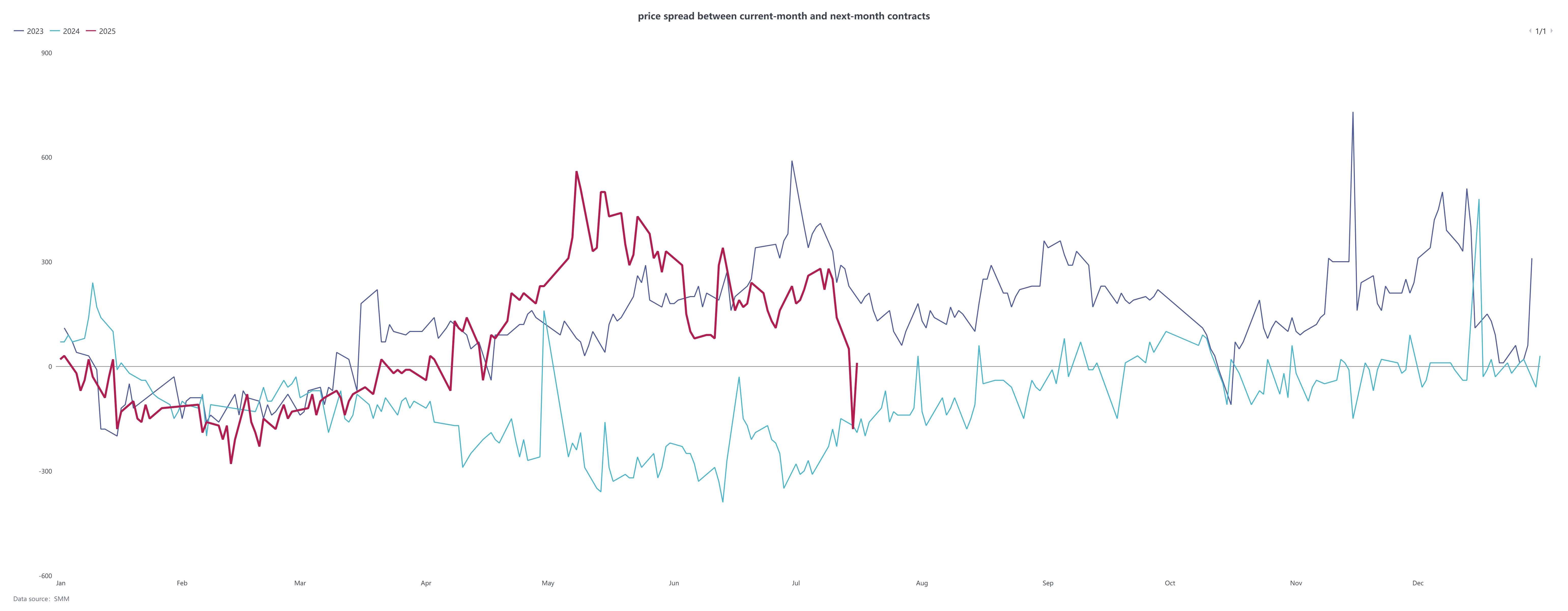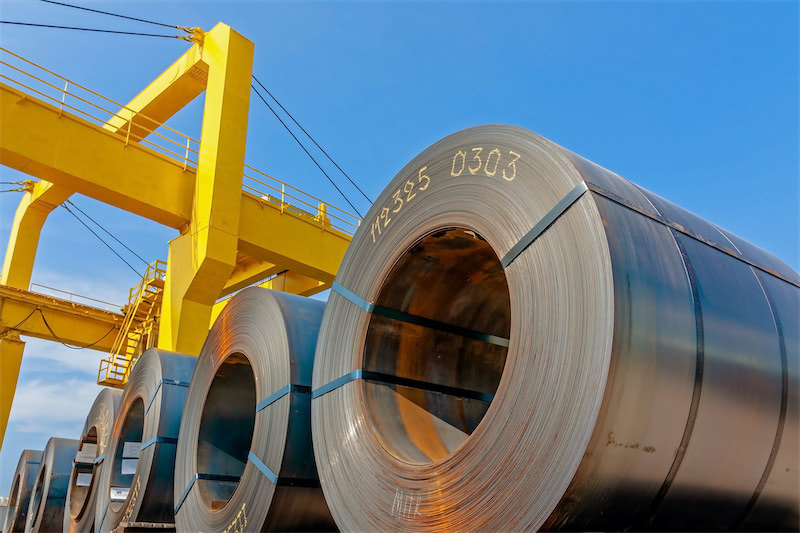






In the first half of 2025, copper prices in the three markets (COMEX, LME, and SHFE) exhibited a wave-like upward trend. After a sharp drop in early April, strong buying interest continued to drive copper prices higher in a wave-like pattern. In the first half of the year, driven by both macroeconomic and fundamental factors, copper prices in the three markets followed similar trends but experienced volatile price spreads.
In the first half of 2025, COMEX copper prices performed exceptionally strongly, becoming the leader in global copper price increases. As tariff expectations gradually heated up, starting from late February, prices embarked on a sharp upward rally. On March 26, during the trading session, COMEX copper futures prices briefly hit a new year-to-date high of $5.37 per pound, with a cumulative increase of up to 20%. Throughout the first half of the year, COMEX copper prices repeatedly broke through key resistance levels, continuously challenging historical highs. By the end of June, COMEX copper prices were just a step away from the historical high of $5.37 per pound set in March this year.

On February 25, Trump initiated a copper import investigation under Section 232 of the Trade Expansion Act of 1962, covering all categories including raw copper, copper cathode, and copper alloys. Although the US had not yet officially imposed tariffs on copper, the market widely expected that copper tariffs could reach 25% in 2025. This expectation triggered severe disruptions in the global copper supply chain. Traders, anticipating that the US would impose tariffs on copper, transferred a large amount of copper inventory from markets such as the LME to the US to profit from rising US copper prices, leading to a surge in COMEX market inventory. The combined effect of this expectation and the actual change in inventory structure sparked strong bullish sentiment among investors, driving prices higher. Additionally, demand growth driven by the US domestic economic recovery and capital inflows due to a weaker US dollar further strengthened the upward trend in COMEX copper prices.
According to SMM data, US imports of copper cathode totaled 680,000 mt from January to May 2025, and COMEX copper inventory stood at 191,600 mt as of June 30, both reaching historical highs.
In the LME market, copper prices also showed an upward trend in the first half of the year, but with a slightly different rhythm compared to the COMEX market. From the beginning of the year to early March, LME copper prices climbed steadily, breaking through the $10,000 per mt mark on March 20 and peaking at $10,164.5 per mt on March 26, setting a new high since early October 2024, with a cumulative increase of 13%. In early April, due to market discussions triggered by Trump's proposed tariffs on foreign imports, risk assets came under pressure, and LME copper prices plummeted below $9,000 per mt, briefly hitting a bottom of $8,105 per mt, before subsequently rising as buyers re-entered the market.

The initial upward trend in LME copper prices in the first half of the year was mainly driven by the structural adjustment of global copper inventory, with a large amount of inventory flowing from the LME to the COMEX market, leading to a significant reduction in LME inventory. LME copper inventory decreased from 271,400 mt at the beginning of the year to 90,600 mt as of June 30, a decline of over 60%. The rapid depletion of inventory exacerbated market concerns about spot supply, driving prices higher. However, after entering the second quarter, as the market digested tariff expectations and demand in other regions remained relatively weak, the upward momentum in LME copper prices gradually weakened. Nevertheless, global traders closely monitored structural changes in the LME amid declining inventory, leading to the emergence of a strong backwardation structure in the LME. In the H1, the copper price trend in the SHFE market generally followed the upward movement of the COMEX and LME markets, but with a relatively stable fluctuation range. After the Chinese New Year, copper prices climbed from around 75,000 yuan/mt before the holiday to around 77,000 yuan/mt. Driven by favourable macro factors and expectations of a contraction in copper cathode supply, prices rose further in early March. By the close on March 20, the most-traded SHFE copper futures contract was reported at 81,670 yuan/mt, reaching a peak of 83,320 yuan/mt on March 26, a new high since early June 2024, with a cumulative increase of over 10%. After Q2, influenced by the seasonal weakening of domestic demand and global copper price fluctuations, SHFE copper prices entered a rangebound fluctuation zone, oscillating between 78,000 and 81,000 yuan/mt.
From the domestic supply and demand perspective, the tight supply situation of domestic copper ore persisted in H1, with copper concentrate TCs continuously declining. By the end of June, China's spot copper concentrate TCs fell to a record low of negative $45 per tonne. However, due to the continuous expansion of domestic smelting capacity and the considerable revenue from by-products such as cold material and sulphuric acid in some smelters, domestic copper cathode production increased against market consensus in H1, with monthly production continuously reaching new historical highs. On the demand side, domestic demand for copper was strongly supported by home appliances, automobiles, and power sectors in Q1 under policy stimulus. After entering Q2, a rush to export in April led to a significant destocking in domestic inventory. However, with the arrival of the traditional off-season in late May and the partial overconsumption of demand in the early stage, domestic copper demand gradually weakened.

In April, due to robust demand and relatively tight supply, significant destocking in the social inventory led to an expansion of the backwardation structure in the near-month contracts of SHFE copper futures. However, with the completion of the delivery of the SHFE copper 2505 contract, market sentiment turned bearish on future consumption and the continued increase in supply, leading to a lack of confidence in the backwardation structure of near-month contracts. As a result, borrow players exited the market.
Summary:
Uncertainties in trade policies at the macro level, particularly US tariff expectations, have become a key force stirring the market. Meanwhile, the divergence of the global economy and the trend of the US dollar have also provided support for copper prices. On the fundamental side, global copper ore supply is tight, with processing fees declining. Domestic demand was strong initially but weakened later, while overseas demand showed a divergent trend. Looking ahead to H2, the global copper market still faces numerous uncertainties. The final implementation of US tariff policies, changes in copper ore supply, the degree of recovery in domestic demand, and the performance of overseas economies will all have significant impacts on copper price trends.
For queries, please contact Lemon Zhao at lemonzhao@smm.cn
For more information on how to access our research reports, please email service.en@smm.cn

